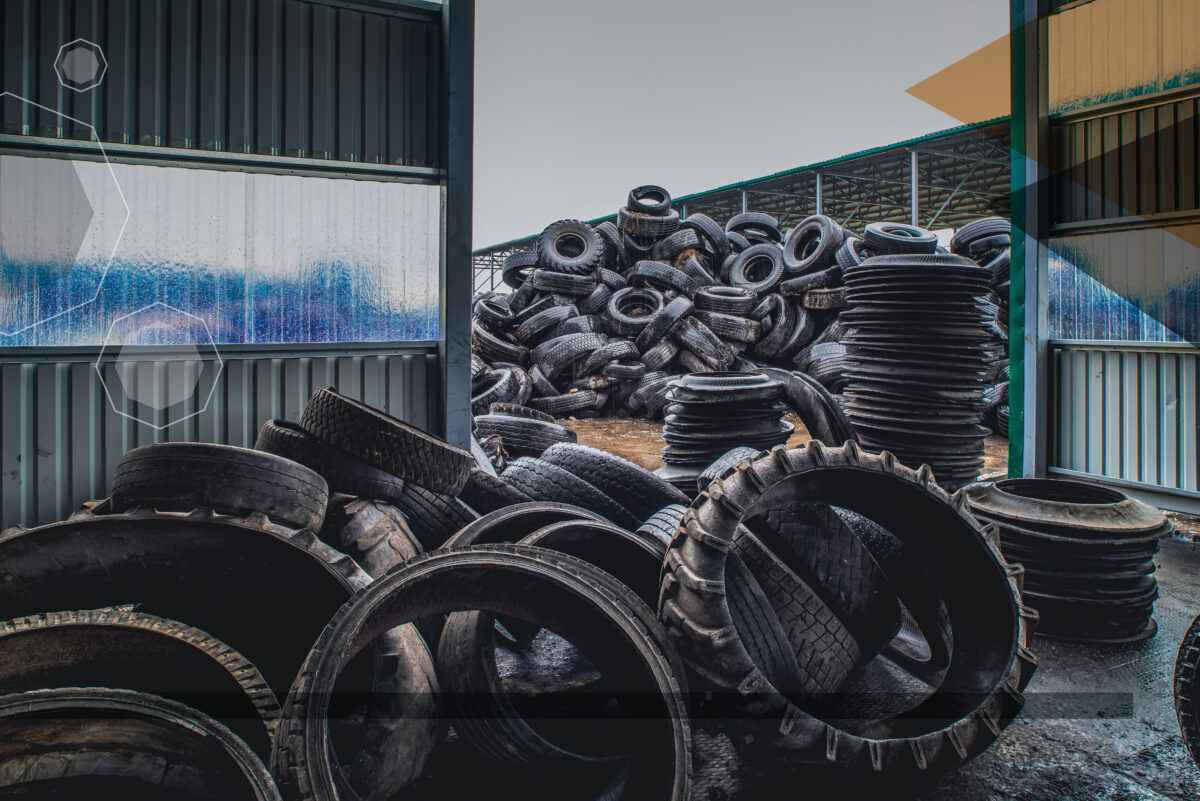Krzysztof Wróblewski explores the problem of faster tyre wear in electric vehicles along with potential solutions
Electric vehicles (EVs) have a small carbon footprint, with emissions three times lower than gasoline cars. However, when the life cycles of all their components, from batteries to tyres, are considered, EVs’ carbon and ecological footprint is not light. Circular materials for car components can provide vital solutions to make cars genuinely better for the planet. This is important to reduce pollution and general emissions and comply with the new Euro 7 regulations’ zero emissions target, which includes reducing non-exhaust emissions and tyre waste.
So why do EV tyres wear out faster? For one, EVs are heavier than gasoline cars because the batteries weigh more. According to Emissions Analytics, for every 1,000 pounds of vehicle weight increase, there is 20% more tyre wear, ccompanied by a rise in brake dust. Another reason for increased tyre wear and tear in EVs is their high instant torque at low speeds, which helps EVs accelerate faster than conventional cars. However, increased acceleration wears tyres and produces more wear particle emissions.

The increased non-exhaust impact
Though EVs are promoted for reducing the carbon footprint of transportation, non-exhaust emissions are five times higher than exhaust particulate emissions, according to Emission Analytics. More weight and faster acceleration cause EV tires to wear out 20 to 50% faster than conventional car tyres, and even more sustainable tyres designed for EVs wear 26% faster than gasoline models.
Faster tyre wear and reduced lifespan mean EV car owners must replace tyres more often. This adds to consumer costs, generates more tyre and road wear particles (TRWP), and increases the number of discarded end-of-life tyres, which are already a massive challenge for solid waste management. According to Emissions Analytics, only 10 to 20% of TRWP remains in the air. The rest settles on roads and soils, where the rain washes it into streams, rivers, and ultimately the ocean: a Pew Charitable Research report found that TRWP from synthetic tyre rubber accounts for 78% of marine microplastic, making it the primary pollutant source.
The chemical composition of TRWP is also a problem. 2,500 chemicals leach from tyres, chemicals like 6PPD, which prevents automotive tyres from degrading and helps them last longer but is more toxic to microalgae and bacteria than any other plastic polymers. Moreover, TRWP contributes to PM10 pollution, meaning these particles have a diameter of 10 microns or less, are inhalable into the lungs, and are a health hazard for people.
Globally, there were 26 million EVs on the road in 2022, five times more than in 2018, and that number will continue to increase—and so will non-exhaust emissions. In fact, they are expected to increase by 53.5% globally as EVs increasingly replace gasoline models for 38 OCED countries in Europe, North and South America, and Asia-Pacific regions.

Looking at solutions
TRWP and other non-exhaust emissions have brought tyres into deeper focus than ever before, and automotive and tyre leaders are coming up with solutions to solve the circular opportunity in EV tyres. A significant area of focus is radical tyre design. Leading companies such as Michelin and Goodyear have been working on producing airless tyres specifically for EVs. The designs would reduce material waste, as the tyres would have a longer life and reduce tyre replacements. SMART Tire for example, uses airless tyre technology developed by NASA for its rovers to build life-long bicycle tyres.
Using renewable and biodegradable materials also addresses the problem of 50 million tons of tyre waste and pollution worldwide, bringing them back into the loop.
Reinventing the (electric) wheel
For EVs to have less of an environmental impact, focusing on their tailpipe emissions alone is insufficient. To comply with the new Euro 7 regulations’ zero emissions target, carmakers must also reduce non-exhaust emissions and tyre waste. They’ll have to review the design, materials, and efficiency of their vehicles’ tyres, batteries, and other material components to meet these targets. However, circular solutions exist, and the future of circular tyres in the EV automotive industry is bright.
The opinions expressed here are those of the author and do not necessarily reflect the positions of Automotive World Ltd.
Krzysztof Wróblewski is Chief Executive of Contec
The AutomotiveWorld.com Comment column is open to automotive industry decision makers and influencers. If you would like to contribute a Comment article, please contact [email protected]
